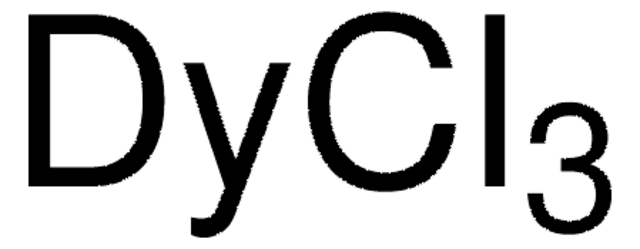261076
Dysprosium
ingot, 99.9% trace rare earth metals basis
About This Item
Recommended Products
Assay
99.9% trace rare earth metals basis
form
ingot
reaction suitability
reagent type: catalyst
core: dysprosium
resistivity
89 μΩ-cm, 20°C
bp
2567 °C (lit.)
mp
1412 °C (lit.)
density
8.559 g/mL at 25 °C (lit.)
SMILES string
[Dy]
InChI
1S/Dy
InChI key
KBQHZAAAGSGFKK-UHFFFAOYSA-N
Looking for similar products? Visit Product Comparison Guide
Storage Class Code
11 - Combustible Solids
WGK
WGK 3
Flash Point(F)
Not applicable
Flash Point(C)
Not applicable
Personal Protective Equipment
Certificates of Analysis (COA)
Search for Certificates of Analysis (COA) by entering the products Lot/Batch Number. Lot and Batch Numbers can be found on a product’s label following the words ‘Lot’ or ‘Batch’.
Already Own This Product?
Find documentation for the products that you have recently purchased in the Document Library.
Articles
Today, near-room-temperature refrigeration is almost entirely based on a vapor-compression refrigeration cycle.
A significant limiting factor for wearable electronics and wireless sensors is the finite amount of energy that can be stored in on-board batteries.
The application of magnetism and magnetic materials pervades our modern civilization in the form of electrical power, communications and information storage.
Rechargeable solid-state batteries are becoming increasingly important due to wide-spread use in computers, portable electronics, and vehicular applications.
Our team of scientists has experience in all areas of research including Life Science, Material Science, Chemical Synthesis, Chromatography, Analytical and many others.
Contact Technical Service






